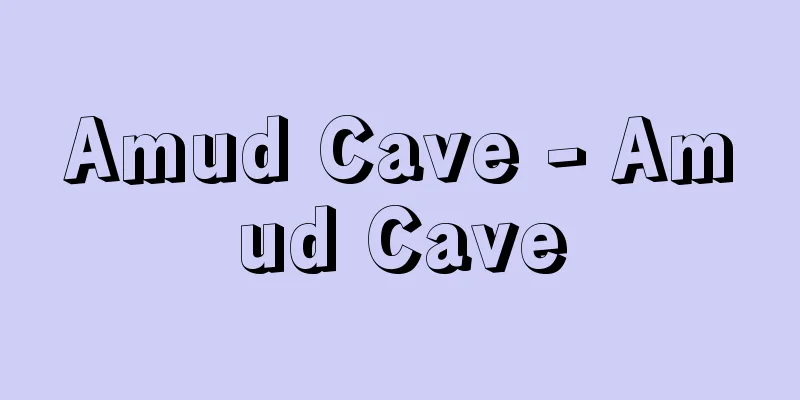Amud Cave - Amud Cave

|
An archaeological site on the shores of Lake Tiberias in Palestine. Investigated in 1961 and 1964 by the University of Tokyo's West Asian Pleistocene Human Remains Research Team, a Paleolithic cultural layer (layer B) containing human bones known as Amud man and a cultural layer (layer A) containing artifacts from various periods after the Bronze Age were identified. The important layer is the lower layer B, which is related to the characteristics of the Amud man, but the stone tools found there are different in appearance from those of the Levalloazo-Mousterian culture, the Middle Paleolithic culture in this region. Source: Heibonsha World Encyclopedia, 2nd Edition Information |
|
パレスティナのティベリアス湖岸にある遺跡。1961,64年に東京大学西アジア洪積世人類遺跡調査団によって調査され,アムッド人と呼ばれる人骨を伴う旧石器時代文化層(B層)と青銅器時代以後の各種時代の遺物を含む文化層(A層)が確認されている。重要なのは下にあるB層であり,アムッド人の特徴とも関連するが,そこで発見されている石器群はこの地域の中期旧石器時代文化であるルバロアゾ・ムスティエ文化のものとは様相を異にしている。
出典 株式会社平凡社世界大百科事典 第2版について 情報 |
Recommend
Kirpotin, VY (English spelling) KirpotinVY
...The Convention defined "socialist realism...
primary commodities
…Generally, primary commodities refer to agricult...
Wedge-tailed Eagle - Wedge-tailed Eagle
...The two genera and ten species of mountain eag...
Hakata merchants
Merchants who were active in the Middle Ages and ...
Guardhouse - Bansho
(1) A guard post. In the Muromachi period, it was...
"The Holland Sea Mirror" - Holland Sea Mirror
...The theory of the sun refers to what we now ca...
Nobuaki Matsudaira - Nobuaki Matsudaira
A feudal lord in the late Edo period. Son of Nobu...
Shrimp torture - Shrimp torture
...The regulations were restrictive for the time,...
Easy Fang - Ekiga
…This is probably because cooking has been a past...
Hotel de Bourgogne
…The official name is “Hotel de Bourgogne”. It is...
Marsupium
Kangaroos and koalas, symbols of Australia, are cl...
Kanekalon
Kanekalon is a synthetic fiber made from a copolym...
Economic Rehabilitation in Occupied Areas
...A general term for "Government and Relief...
Maximus, Magnus
[raw]? [Died] August 28, 388. Roman pretender to t...
Reef explosion - Ganshoubaku
...(1) Throwing stones There are two types of sto...









